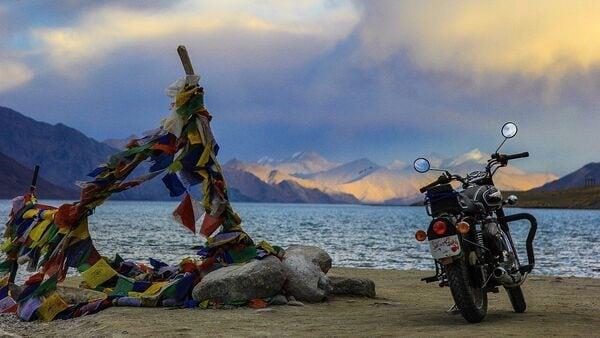
Marketing Executive From Noida Dies Of Altitude Sickness In Ladakh: All You Need To Know About Oxygen Deficiency
According to a Times of India report, Chinmay Sharma, a digital marketing executive at a Noida-based firm, had left for a trip to Leh on August 22. However, four days later, on August 26, Chinmay complained of a headache and informed his father about it too.
Chinmay's father advised his only child to take rest and seek medical attention .
Also Read | Indian man dies of dehydration in Saudi Arabia's desert after GPS failureLater in the day, according to the TOI report, the 27-year-old told his father that he was facing difficulty in breathing.
Concerned, the father called Chinmay's hotel in Leh and requested that they take his son to the hospital. The couple rushed to Leh from their hometown in Uttar Pradesh's Muzzafarnagar.
However, on August 29, the TOI report said, the 27-year-old died during treatment, just hours before Chinmay's parents reached Leh.
Chinmay's parents are teachers in Muzzafarnagar .
Also Read | Man dies as speeding Mercedes rams into him on Ashram flyover What is high-altitude sickness?Leh, situated at an altitude of 10,000 feet, is a high-altitude desert region. To prevent high-altitude sickness, it is advisable to acclimatise for a minimum of three days.
High-altitude sickness or“mountain sickness” occurs when the body struggles to adjust to lower oxygen levels at high elevations. The symptoms of High-altitude sickness include headache, nausea, dizziness, and fatigue.
Also Read | Bengaluru news: Man dies after jumping in front of metro; train services suspendSymptoms typically develop within 12 to 24 hours after reaching a higher altitude and generally improve within a day or two as the body acclimatizes to the altitude change.
There are three types of altitude sickness: Acute Mountain Sickness (AMS), which is the mildest form; High-Altitude Cerebral Edema (HACE), a more severe form of AMS; and High-Altitude Pulmonary Edema (HAPE), which can rapidly become life-threatening.
Also Read | Zumba session turns tragic, man dies of heart attack in Maharashtra | Watch Notably, anyone can develop altitude sickness, no matter how fit, young, or healthy they are. Legal Disclaimer:
MENAFN provides the information “as is” without warranty of any kind. We do not accept any responsibility or liability for the accuracy, content, images, videos, licenses, completeness, legality, or reliability of the information contained in this article. If you have any complaints or copyright issues related to this article, kindly contact the provider above.
Market Research

- Manuka Honey Market Report 2024, Industry Growth, Size, Share, Top Compan...
- Modular Kitchen Market 2024, Industry Growth, Share, Size, Key Players An...
- Acrylamide Production Cost Analysis Report: A Comprehensive Assessment Of...
- Fish Sauce Market 2024, Industry Trends, Growth, Demand And Analysis Repo...
- Australia Foreign Exchange Market Size, Growth, Industry Demand And Forec...
- Cold Pressed Oil Market Trends 2024, Leading Companies Share, Size And Fo...
- Pasta Sauce Market 2024, Industry Growth, Share, Size, Key Players Analys...


















Comments
No comment